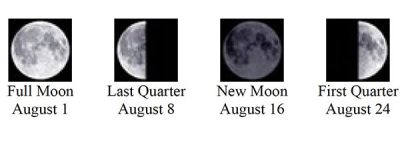By Looking at the Skies We Are Looking Back Through the Millennia
Opinion Advocates for ideas and draws conclusions based on the author/producer’s interpretation of facts and data.
 By Scott Levine
By Scott Levine
People often say astronomy is like a time machine. The objects we love are so enormously far that we talk about them in terms of how long their light has traveled to us.
When we say the giant, red star Antares is 550 light years away, we’re saying it’s so far that its light has taken 550 years to get to our eyes. To regular folks, that’s about 3.3 quadrillion miles (or 5.3 quadrillion kilometers).
This means when we head out tonight to look at Antares, we’re looking across all of that tremendous emptiness to see Antares, not as it is, but as it was in the time of DaVinci, Descartes and Galileo. Astronomers have found galaxies that bring us back nearly to the dawn of time itself. Even our own sun is far enough that we see it as it was eight minutes ago.

Astronomy also gives us a chance, maybe more than any other science, to connect to the people who came before us. Our ancient ancestors looked to the night to help make sense out of the world around them. They cooked over campfires and noticed patterns among the stars. They lied on their backs and sketched hunters, bears and mythological heroes into the skies. Countless traditions and cultures have brought us innumerable constellations.
They also saw a broad band of light that started along the southern horizon. Rather than single points, like other stars, this belt was thick and creamy. As it meandered high overhead, it looked like someone had somehow spilled a spectacular amount of milk across the night.
We’ve learned that was their view of countless stars, so far from us that their light blurs together into that band of light. Through the generations, their words are still with us. Today, we call that band of light the Milky Way, which is our name for our galaxy. In fact, even that word – galaxy – comes to English from the same Greek root that brings up milkiness, and it refers to every one of the vast and diverse islands of stars throughout the universe – trillions of them. When we use lactic, or lactose, and, even galactic, we’re reaching back through the millennia to spend a little time at the campfire with our ancestors.
It’s difficult, though, to see the Milky Way these days, with the city so close, and with bright lights everywhere, but all’s not lost. Creeping along the southern horizon on summer nights, is the constellation Scorpius (the scorpion). Let’s see if we can find our friend Antares at its heart. Sagittarius (the archer) is toward Scorpius’s right. Its stars are mostly dim, but the ones we can see sit in the shape of a teapot, its handle to the left and its spout to the right.
Out that way, many thousands of light years beyond those stars, is the center of our galaxy. From here, it’s a thin sheet, because we’re embedded within it, as though we’re inside an unimaginably huge dish. Let’s try to imagine it cutting across the sky overhead, distant and welcoming. What else can we see out there?
I hope you have clear skies and look up tonight.
Scott Levine (astroscott@yahoo.com) is an astronomy writer and speaker from Croton-on-Hudson. He is also a member of Westchester Amateur Astronomers, a group dedicated to astronomy outreach in our area. For information about the club including membership, newsletters, upcoming meetings and lectures at Pace University and star parties at Ward Pound Ridge Reservation, visit www.westchesterastronomers.org.

Examiner Media – Keeping you informed with professionally-reported local news, features, and sports coverage.
